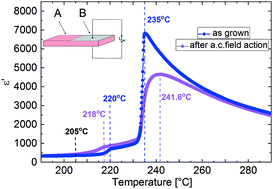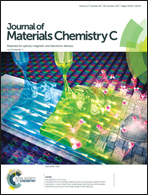Surface–bulk interrelation in a PbZrO3 single crystal
Abstract
In many cases, functionality is connected with the response of a material to the action of an external electric field. In oxidic perovskites, so widely used in practice, a disadvantage is their surface chemical instability when subjected to an electric field. That is why investigations of the influence of a high intensity alternating electric field on the phase transition temperatures and chemical properties of the surface and bulk of single crystals of PbZrO3 intentionally made defective by doping with niobium have been undertaken. It has been demonstrated that defects produced through the electro-degradation process make the low-field dielectric response a highly diffusive one, but they do not obscure the sharp phase transitions detected by temperature changes in the bulk piezoelectric and electrostrictive deformation around the critical temperature. Based on XPS spectra, the types of defects at the surface and in the bulk of as-grown single crystals caused by the electric field action are identified. It has been shown that the surface–bulk interrelation in ferroic lead zirconate and solid solutions based on this material has to be taken into account while trying to use them as high quality functional materials.



 Please wait while we load your content...
Please wait while we load your content...